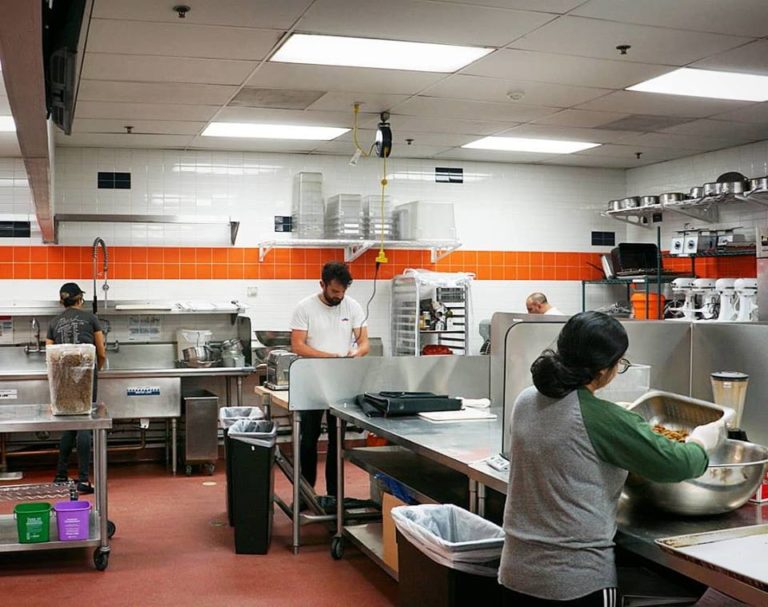
In 1995’s The Net, Sandra Bullock ordered a pizza from Pizza.net, a fictional company with the now-dated tagline: “We deliver the best pizza in cyberspace.” At the time, it was still a wild idea, existing squarely in the realm of far-off science fiction. Third-party restaurant delivery services like Seamless, UberEats, Postmates, and Foodora were but a twinkle in the eye of future startup pioneers. Today, they are a booming $19 billion sector of the United States economy, with significant growth anticipated in coming years.
The ease and ubiquity of these services comes at a nominal cost to the consumer, largely in the form of delivery charges. But they take a huge bite from restaurants, in the range of 25% to 35% commissions. Considering the average profit margin at full-service restaurants is already a thin 6.1%, that’s a hard bargain.
Here’s the rub: Even if a restaurant can squeak by financially with these third-party arrangements, many kitchens don’t have the excess capacity to meet demand for online sales during peak operating hours. And this conflict over effective use of time and space—combined with rising urban rents and real estate scarcity—has given rise to the latest innovation from the disruption industry. Meet the virtual restaurant, or “ghost kitchen,” a business that distributes meals through these apps, but has no sit-down, brick and mortar location.
In March, it was reported that Uber Eats is testing a program in Paris, where it leases commercial kitchens, renting the spaces for delivery-only restaurants. Leasing kitchen space puts Uber in competition with similar virtual restaurant enterprises, such as CloudKitchens (run by former Uber CEO Travis Kalanick) and Kitchen United, both of which offer turnkey commercial kitchens optimized for delivery service.
For the moment, there would seem to be much potential upside to these virtual kitchens. For first-time entrepreneurs, the model presents an opportunity to launch a business without the overhead risk of a restaurant build-out and labor costs for front-of-house staff.
For established, successful brands, the virtual kitchen can be a way to increase overall sales by producing food in an off-site kitchen where delivery orders don’t interfere with a busy lunch or dinner service. These locations can produce meals more efficiently, and expand into territories where commercial rent is too high for a sit-down restaurant.
Restaurateur Josh Zadikoff is thrilled about this. As president of the Cornerstone Restaurant Group, Zadikoff oversees 13 restaurants, from Michael Jordan’s Steakhouse in Chicago to Eno, a wine bar in San Francisco. After testing out third-party delivery apps with the steakhouses, he found that value, quality and experience were too difficult to uphold. There isn’t a huge market for a $123 Japanese wagyu ribeye that was cooked 45 minutes ago.
But with a newer Cornerstone business called Urbanbelly, a fast-casual, counter service concept by chef Bill Kim, serving noodles, dumplings and rice, the system works perfectly.
“That cuisine lends itself to carry out and delivery,” says Zadikoff.
A just-opened location of Urbanbelly in the posh River North neighborhood of Chicago does not have a dine-in component. Food is produced in a Kitchen United space, and delivered through Caviar.